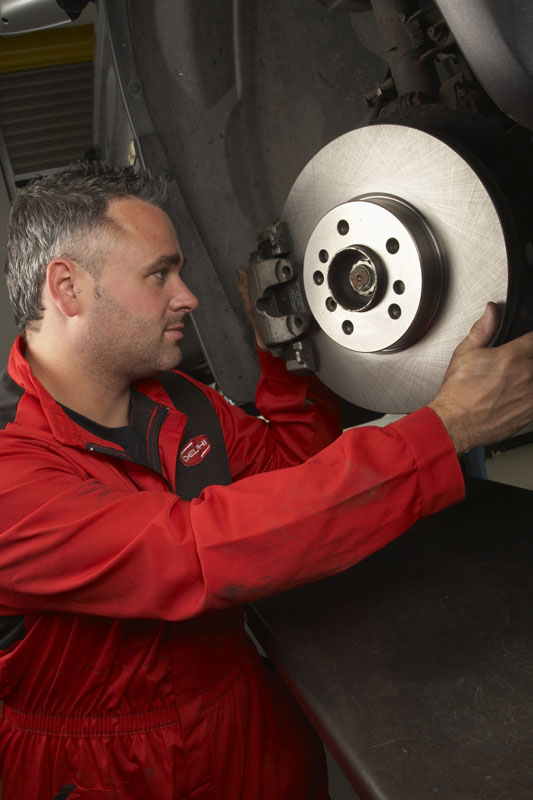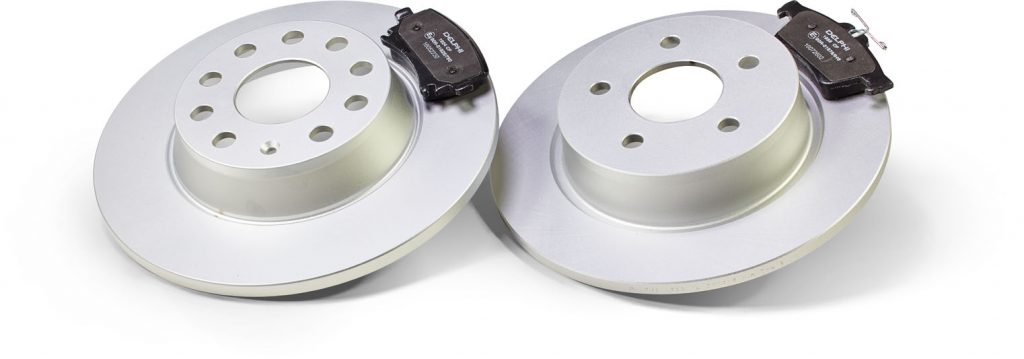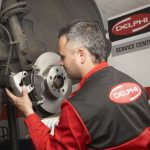Delphi takes a closer look at brake noise, its causes and how technicians can resolve this common problem.
What is brake noise?
Sound is vibration, whether it’s a bird tweeting, an acoustic guitar or a clap of thunder. These vibrations set the air around them in motion, creating a sound wave. The pitch of the noise is determined by the speed of the vibration.
The same rules apply when it comes to brake noise. All braking components vibrate to some extent, creating noise. For the most part, this noise is not detectable by the human ear. However, when this vibration increases in intensity, or inducesa secondary vibration in another part, the brake disc acts like a speaker, amplifying the noise and making the vibration audible. The result: brake noise.
 What causes brake noise?
What causes brake noise?
Brake noise can be caused by a variety of component or installation issues. These include:
- Excessive corrosion
- Seized or bent location pins
- Partially seized calipers
- Built up dirt and brake dust
- Excessive runout
- Disc thickness variation (DTV)
- Worn brake discs
All of these can cause vibration between the disc and the brake pad, creating noise. Whilst the braking system is the most common cause, noise can also be created when the motion in braking creates movement in another part – typically steering components, motor mounts and transmission mounts.
What to look out for
It’s a good idea to carefully check the entire system, especially the pads, as they’re normally a good indication that something’s not right.
For example, tapered wear on the pads could suggest a faulty caliper. A damaged back plate could be the result of excessive force during installation. Similarly, thickness variation on the disc is a sign of judder. Other faults to look out for include uneven pad wear, brake fluid leaks, piston damage and sticky caliper sliders.
Best practice advice
To minimise the potential for brake noise,Delphi offers some best practice advice:
- Ensure that all corrosion, built up dirt and brake dust is removed from the caliper.
- Always clean exposed caliper piston surfaces before retracting the pistons. Ease piston retraction by opening the bleed nipple. Retract piston(s) with a suitable tool. Never lever against the disc friction face.
- Thoroughly clean pad contact points in the caliper.
- Check pistons, seals, boots and sliding elements on the caliper to ensure that they are free from damage and corrosion, and able to slide.
- Replace all anti-rattle clips, springs and pins, which can lose their spring tempering due to high brake heat.
- Always check the disc for minimum thickness, DTV and runout when fitting new pads.
- Always check that the correct pads are fitted and that they’re positioned correctly in the caliper. They should fit freely in the brackets to avoid ongoing contact with the discs.
- Never use clamps on brake hoses. Hoses contain multiple layers of braiding which give them their structural strength. The hose may become damaged or crushed, leading to hydraulic issues such as blockage or fluid leaks.
- Never use mineral oil-based lubricants on parts with rubber seals. This will cause the seals to swell.
- In some instances, you’ll need to replace the discs and/or pads.
For step-by-step instructions on how to do this, watch Delphi’s installation video at youtube.com/DelphiAutoParts.

Delphi noise fixes
One way to help prevent brake noise is by only using OE-quality brake pads – poor standard pads are one of the biggest contributors to noise. In recent years, demand for higher performance and reduced weight in modern vehicles has led to material changes, resulting in increased use of supplementary processes to counteract vibrations.
Unlike other aftermarket manufacturers, every Delphi brake pad incorporates an OE underlayer technology. The 3mm layer of modified noise-absorbing friction material significantly reduces noise,
as well as acting as a thermal insulator and ensuring a stronger pad.
Delphi pads also feature OE-configured, fitted and quality chamfers and shims. Delphi shims are multi-layered with differing grades of dampening materials. These layers are finely tuned by engineers to bring out the very best qualities. The material is carefully selected and either mechanically attached, clipped and/or hot bonded for improved noise dampening.










